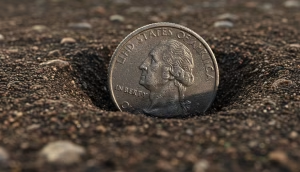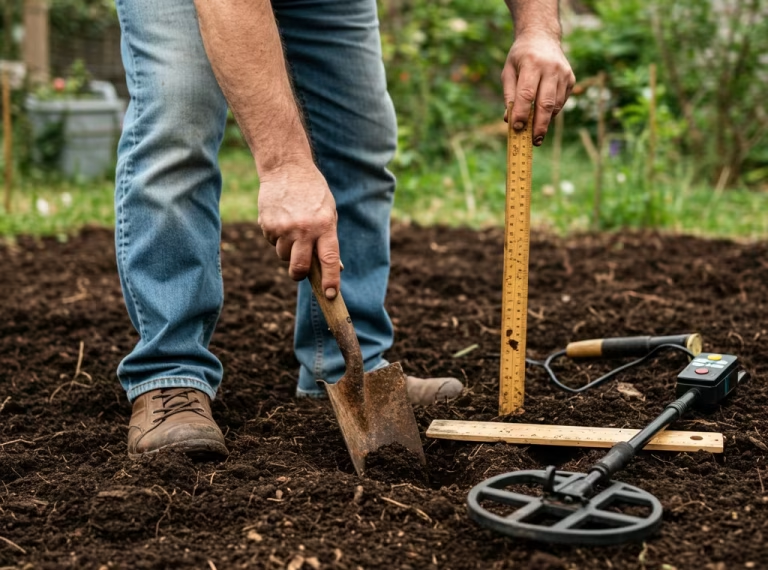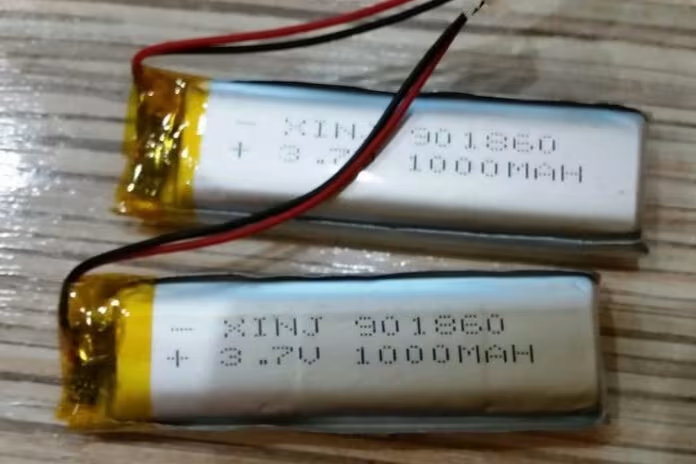I remember my first “real” find like it was yesterday. After months of pulling up bottle caps and rusty nails, my detector gave that sweet, solid tone that makes your heart skip. Six inches down in a field that had seen Civil War soldiers march through a century and a half earlier, I found a brass button with faint markings still visible. That moment changed everything about how I approach this hobby.
What most beginners don’t realize (and I certainly didn’t) is that your detector settings matter as much as where you hunt. I’ve spent fifteen years tweaking knobs, learning from mistakes, and filling my display cases with history. Let me share what really works.
The Frequency Game: Matching Settings to What You Hunt

Here’s something I learned the hard way: different treasures need different frequencies. When I’m hunting old coins which is still my first love in this hobby I keep my machine between 5-15 kHz, usually closer to the lower end of that range. The experts aren’t wrong when they say lower frequencies give better depth for coins, especially silver and copper ones.
I thought I was using my deep metal detector correctly, but I was getting frustrated at the park near the old courthouse. Then I switched from 20 kHz down to 8, and suddenly I was pulling seated Liberty dimes from depths I couldn’t touch before.
The research backs this up those lower frequencies create a field that penetrates deeper while still catching those medium-conductivity targets. I’ve tested this repeatedly in controlled settings, and the difference is remarkable.
For Civil War relics, which I hunt whenever I can get permission on battlefields here in Tennessee, I’ve found the sweet spot is similar but requires some tweaks. Most military buttons, buckles, and bullets from that era contain different combinations of iron, brass, and steel that respond better to frequencies in the 7-15 kHz range. Last October, I spent a weekend on a farm near Shiloh using my detector at 10 kHz and recovered eleven minie balls and a cartridge box plate that had been missed by other hunters using higher frequencies.
Gold hunting is a completely different animal. When I’m specifically targeting jewelry or small gold items, I crank my machine up to the highest frequency it offers usually around 20-22 kHz on my equipment. The difference is night and day. Small gold responds to those higher frequencies in a way it simply won’t at lower settings. My sister’s lost wedding band wouldn’t appear at 12 kHz, but bumping to 20 kHz made it sing out like a bell.
Soil Matters More Than Most People Realize

Half the battle in this hobby is understanding the ground beneath your feet. I learned this lesson hunting in the red clay of Georgia versus the sandy soil at my favorite beach spot in Florida.
“The same detector that goes 10 inches deep in beach sand might struggle to hit 6 inches in heavy clay,” my first mentor told me. He wasn’t exaggerating. Different soils can either boost your signal or kill it dead.
I once spent three frustrating hours in a promising field near an old stagecoach stop, finding absolutely nothing until I realized I needed to adjust for the heavily mineralized soil. Once I properly ground balanced my machine and slowed my sweep speed, history started emerging from the earth. The discrimination was reading iron signals that were actually masking good targets.
Moisture is another game-changer. Some of my most productive hunts have come right after a light rain not a downpour that turns everything to mud, but just enough to dampen the soil. The improved conductivity can add inches to your detection depth. I schedule hunting trips around weather forecasts for this very reason.
Wait for the rain to stop and then give it about two hours. That’s your golden window. Soil is damp enough to conduct well but not so wet that you’re dealing with that annoying “halo effect” around iron that masks good targets.
Each soil type needs its own approach too. In clay, I slow down, increase my depth settings, and make tighter sweeps. In sandy areas like beaches or dry creek beds, I can move faster and use wider sweeps. The signal travels differently through each medium, and understanding this has doubled my finds over the years.
How Deep Can You Really Go?

Let’s be honest about what’s realistic. Television shows make it look like people are pulling Civil War swords from three feet down with basic equipment. That’s not happening in real life.
Most decent detectors will hit small coins or buttons at about 8-12 inches in good conditions. I’ve documented hundreds of finds, and very few coins have come from deeper than that. Medium-sized buckles or tools might reach 15 inches with the right settings and soil. Larger items can potentially be found deeper I once recovered a Revolutionary War era cooking pot at almost 2 feet, but that’s exceptional.
The depth game is all about setting realistic expectations. I keep a log of all my finds with measured depths, and this has helped me understand what’s actually possible rather than what I wish were possible.
Field-Tested Approaches That Actually Work
After twenty years and thousands of hours swinging my detector, here’s what I’ve found works best when approaching a new site:
I start with a “benchmark test” by burying a modern coin at 6 inches in the actual soil I’ll be hunting. This tells me immediately how the ground is responding. Based on the signal strength, I adjust my settings before the real hunt begins.

In one memorable case, I was detecting at a 200-year-old homesite and getting nothing but junk. On a hunch, I dug a test hole and discovered the soil composition changed dramatically about 8 inches down modern topsoil had been brought in during landscaping decades earlier. Adjusting for this layering effect led me to find an 1830s large cent that everyone else had missed.
Moisture has proven so important that I now carry a spray bottle of water on dry days. A light misting around a questionable signal has turned many “maybes” into solid hits by temporarily improving conductivity.
When I find my first good target of the day, I pay careful attention to the exact depth and signal characteristics, then adjust my settings to optimize for similar targets. This adaptive approach has significantly increased my success rate.
The Art and Science of the Hunt
Metal detecting isn’t just about technical settings it’s about developing an intuition for what lies beneath. The settings are your tools, but your experience is what makes them effective.
I still get that same rush when I hear a promising signal, carefully remove the plug of earth, and spot something that hasn’t seen daylight in a century or more. The difference now is that my understanding of my equipment and the soil conditions means those moments happen much more frequently.
Whether you’re searching for coins from the early republic, Civil War artifacts, or modern jewelry, remember that the right frequency for your target, proper adjustments for your soil conditions, and realistic expectations about depth will transform your success rate. Every piece of history you recover connects our present to the past in a tangible way that few other hobbies can match. Happy hunting, and may your finds be historic!

My name is Paul and I am the founder of Detector For Metal, a dedicated resource for metal detecting enthusiasts seeking to uncover historical treasures and connect with the past using the latest technology. As a stay-at-home dad and family man, I’ve found metal detecting to be the perfect hobby that combines family adventure with historical learnings for the whole family.
As a father, I’m deeply committed to passing on this hobby to the next generation of detectorists, starting with my own children. I share advice on everything from metal detecting with kids to exploring the top 10 metal detecting sites you never thought about. My methodical approach to the hobby goes beyond the thrill of discovery—it’s about creating family traditions while preserving history and sharing the stories of those who came before us.


